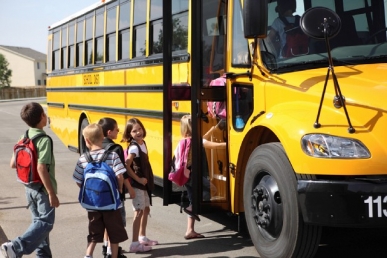Energy Efficiency Moves to the Head of the Class

- Improved indoor and outdoor air quality, an aid to learning and protection for developing lungs and brains;
- Increased interest in math and sciences as students observe and participate in how the school conserves energy and water; and
- Accelerated social change. Kids bring what they’ve learned at school home to their families, who begin to conserve energy and water themselves, lowering household utility bills.
Take Richardsville Elementary in Kentucky. It is the nation’s first “net-zero” school— its net annual energy consumption and carbon footprint amount to zero. To reach that level of efficiency, the school pulled out all the stops. In addition to using tons of natural lighting, they installed geothermal heating and cooling, bamboo gym floors, solar panels on the school rooftop and in the parking lot. A recent E&E news article notes that many schools have land and buildings well-suited to solar arrays, allowing for easy installation, and they often have large parking lots, making them good candidates for carport solar systems.
The result of the changes at Richardsville is that the school receives no utility bills, so it can now spend whatever money used to go to electricity on other school needs. In addition, the innovations put to work at Richardsville and other energy efficient schools can be put to educational use, teaching students about recycling, geothermal energy and other subjects. ”The kids have been using the environment itself as an educational platform to teach other students,” Jay Wilson, Richardsville’s energy manager, said in the E&E news story. “They’ve been very interactive with the building, utilizing it to its fullest extent.”
Another school, Lady Bird Middle School in Irving, TX, has also implemented energy saving measures and incorporated them into a 3-D interactive display that explains the inner workings of clean energy technologies to its students.
By conserving energy in our schools and bringing students into the process, we improve the health of future generations, cut schools’ utility bills, reduce stress on the electric grid and, who knows, inspire a new generation of environmentally aware scientists. I give that plan an A+.
A version of this post originally appeared on our Energy Exchange blog.











